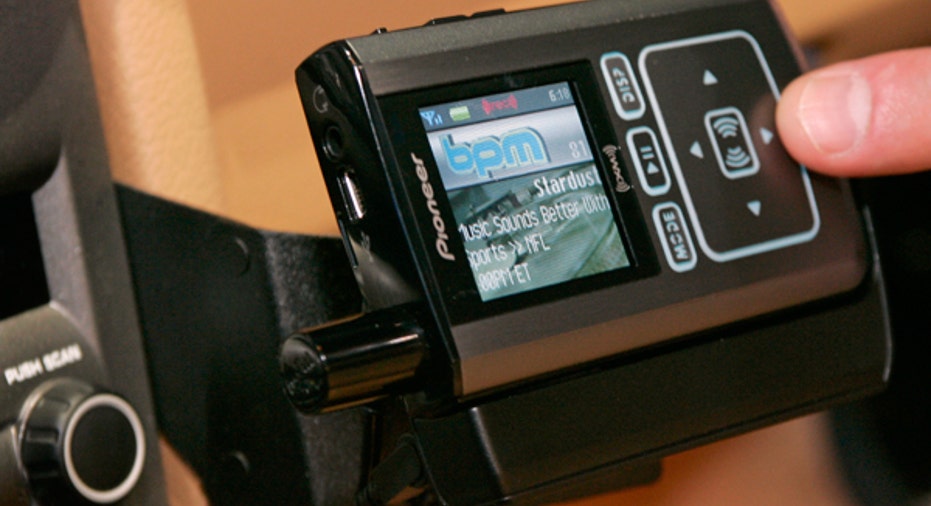5 Driving Innovations that Save Lives, and 1 that Doesn't

New technologies are making driving a safer experience for millions of Americans, and bringing down car insurance rates to boot.
Some auto insurers offer specific discounts for devices like electronic stability control and daytime running lights. In addition, a technology that limits the number and severity of accidents "influences rates, and that's passed on to the consumer," says Tom Layman, vice president of the claims division for GMAC Insurance.
Here are five driving innovations that are making the roads safer - and one that isn't.
Red-Light Cameras
A study released by the Insurance Institute for Highway Safety (IIHS) in February found that in 14 big cities that installed red-light cameras, fatal crashes caused by motorists running red lights plummeted by 24% between 2004 and 2008.
And it's not just fatalities that have declined. IIHS spokesperson Russ Rader says the cameras help reduce all crashes caused by motorists who run red lights.
Cities usually place the cameras at the intersections with the highest crash rates, and then publicize that they're in use. The cameras can have a ripple impact on driving habits throughout the local area, Rader says.
"They don't have to be at every intersection to be effective," Rader says.
Electronic Stability Control
Snow, ice and rain are key factors in causing motorists to lose control of their cars, Layman says.
But electronic stability control is designed to help you maintain control of your vehicle on slippery roads or during high-speed maneuvers. The technology has reduced the risk of fatal single-vehicle crashes by half, according to IIHS.
Rader says the risk of something like an accident where you run off the road, hit a tree and go int a rollover plunges by more than 70% if your car has electronic stability control.
"There are very few safety systems that have that kind of huge effect," Rader says.
Daytime Running Lights
Vehicles with daytime running lights have about 5% fewer accidents than cars without such lights, according to IIHS. Rader calls the technology "a low-cost way to reduce crashes."
Layman says the lights help improve your visibility, allowing you to better see both other drivers and pedestrians. He believes they are a boon whether you're zooming down the highway or creeping through a parking lot.
"I've reviewed countless situations where one party to an accident confirms that they never saw the other vehicle," he says.
Inflatable Seat Belts
Ford Motor Co. just rolled out inflatable seat belts that combine the features of traditional seat belts with those of airbags, and deploy within milliseconds of a crash. The new seat belts spread crash forces over a larger area of a person's body, helping to reduce pressure on a person's chest and controlling their head and neck motion.
Inflatable seat belts also can be used with children's car seats and booster seats.
The new seat belts are available for rear-seat passengers on Ford's 2011 Explorer. It's too early for the IIHS to have safety data, but Rader says it's an innovation that "does have promise."
Head Restraints
Redesigned head and seat restraints are higher and fit closer to the back of motorists' heads than earlier versions, Rader says. That reduces the risk of whiplash if a vehicle is hit from behind.
The restraints "keep the head and torso moving together," and that's resulted in a 15% decline in injury rates, he says.
While many manufacturers have worked hard to improve head and seat restraints in the past couple of years, not all new makes and models get high marks from the IIHS.
Hands-Free Cell Phones
Hands-free cell phones may seem like a natural for reducing accident rates. However, this is one example where an innovation intended to save lives hasn't paid off as expected.
A 2009 study by the Highway Loss Data Institute looked at insurance claims in four jurisdictions before and after bans on hand-held cell phone use went into effect. The study found no change in claim rates after bans went into effect.
So far, nine states have banned drivers from using hand-held cell phones. Despite that, "research shows no difference in the risk between hand-held and hands-free" cell phone usage, Rader says. "The distraction of the conversation is still occurring."
Rader says safety experts now suspect that other behaviors above and beyond cell phone use are contributing to crashes. Such behaviors may range from a mother turning around to scold her youngsters in the back seat to a college student bending over to pick up a CD he dropped.
When it comes to distracted driving, "one thing is becoming more clear - it's bigger than just cell phone use," Rader says.
Related topics:
The original article can be found at Insurance.com:5 driving innovations that save lives, and 1 that doesn't